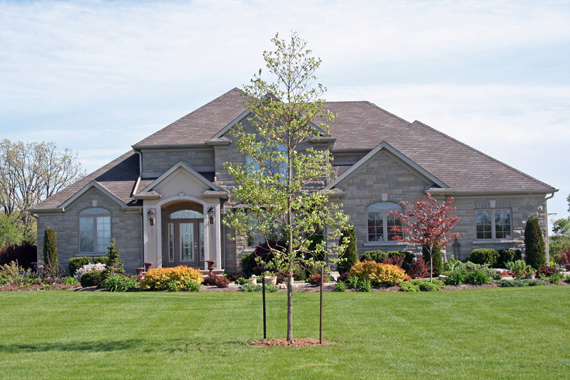Having spent some time researching trees for our property, and in particular my woodland areas, I have been on a quest to add trees and shrubs native to the Carolinian Forest with a particular interest in those native to Ontario.
Although I do not plan to limit myself to just native plant material, there are definitely benefits to increasing the number of native varieties in a garden. The wide variety and unique nature of many of the native species makes for a more interesting garden. Native species are also more durable in the garden landscape as they are hardy for the area and more disease and pest resistent. Since they are already adapted to the climate, soil, insects and other wildlife in our area they are more likely to survive without the intervention of fertilizers and pesticides. Native plant materials are also more adapted to attracting and feeding local birds and beneficial insects.
So far I have added some lesser known trees including Acer spicatum (Mountain Maple), Asimina triloba (Pawpaw), Gymnocladus dioicus (Kentucky Coffeetree), Liriodendron tulipefera (Tulip Tree) and most recently Sassafras albidum (Sassafras Tree) and Carpinus caroliniana (Blue Beech). These are planted along with some more popular native trees including red maples and sugar maples, Cercis canadensis (Redbud), white pine and canadian hemlock as well as some local native trees growing naturally in our back bush including Prunus serotina (Black Cherry), Prunus virginiana (Choke Cherry) and some Crataegus (Hawthorns).
And being the shrub-aholic I am, I of course have added several native large and small shrubs to my gardens. The Cornus family provided me with a plethora of material including Cornus alternifolia (Pagoda Dogwood), Cornus racemosa (Grey Dogwood), Cornus florida (Flowering Dogwood) and of course red osier dogwood. Some less common native shrubs I have included in my garden are Aesculus parviflora (Bottlebrush Buckeye), Cephalanthus occidentalis (Buttonbush) and Calycanthus floridus (Carolina Allspice). More common natives include Hamamelis virginiana (Witchhazel), Amelanchier alnifolia varieties (Saskatoon Berry and Serviceberries), Rosa blanda (Smooth Wild Rose) and Diervilla lonicera (Bush Honeysuckle). And to provide more berries for the birds I have added such natives as Symphoricarpos albus (Snowberry), Sambucus pubens (Red Elderberry) and Viburnum Trilobum (Highbush Cranberry). And no native garden would be finished without a large number of Rhus typhina (Sumac) if you have the room as I do.
Although careful not to bring in anything too aggressive, I have also planted such climbers as Clematis virginiana to scramble among the undergrowth.
I have enjoyed the thrill of adding as many native varieties as I can to my gardens, both in terms of the uniqueness of the plants themselves and the hunt for some of the more elusive varieties. There are still many more on my list — hopefully I will not run out of room!

Interesting! I live in Ontario Canada and I was looking into planting a native smooth rose. I was wondering how aggressive you found this plant to be after a few years. Let’s say in comparison to bush honeysuckle who has been quite vigorous in my yard. But it’s ok, like you I have some space to spare.
Do you find it popping out elsewhere or it just suckers in place?
I don’t know about the smooth rose but I do find many native shrubs sucker so that is something to be concerned about.